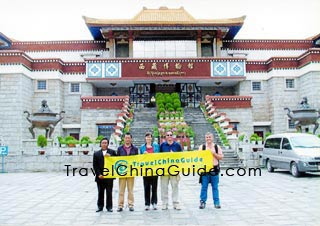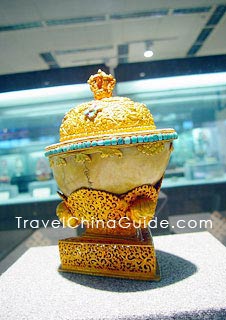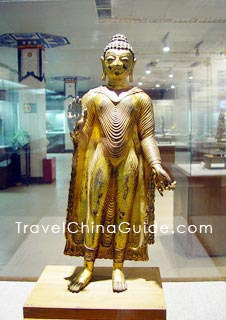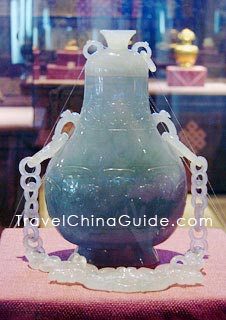Tibet Museum
 |
The construction project of the Tibet Museum was listed as one of the sixty-two "Aid-Tibet Projects" in July 1994. It was opened in October 1999 to coincide with the 50th anniversary of the Founding of the People's Republic of China and the 40th anniversary of Tibet's Democratic Reform. The former Chinese chairman Jiang Zemin inscribed its name.
The museum building is a pioneering institution in the history of the region. Designed by a Han Chinese architect from Sichuan province, the complex is a wonderful combination of Chinese and Tibetan architectural styles. Upon entering the Prelude Hall, visitors' attention will immediately be caught by the colourfully ornamented beams, pillars, lintels, banners and wall hangings. Going forward, visitors will see that the Tibet Museum is actually sub-catalogued: the first catalogue includes two exhibition halls on the first floor, showing the splendid history of the land and its abundant natural resources; the other catalogue is on the second floor and is comprised of five small exhibition halls that display folk custom, treasures, and arts and crafts of that region. The Tibet Museum houses a rich collection of prehistoric cultural relics including Buddha statues in different postures, imperial jade seals, gold albums, gifts granted by emperors, colourful tangkas, and various printed Sanskrit and local scriptures. Visitors can also see variety of folk art such as unique local handicrafts, costumes, jewellery, and adornments made of gold, silver, and jade, as well as fine Chinese pottery.
|
|
|
Tibet Museum is not only a source of information and inspiration for the locals themselves, but also a wonderland attracting an increasing number of people from overseas and educating them on the unique Tibetan culture.
How to get to Tibet Museum
2. Take taxi from downtown Lhasa to the museum; about CNY 10 for the taxi fare.
| Entrance Fee | Free |
|---|---|
| Opening Hours | May - Oct.: 9:30 - 17:30 Nov. - Apr.: 10:30 - 17:00 Closed on Mondays (except on holidays) Visitors aren't allowed to enter 30 minutes before the closing time. |
| Audio Guide | CNY 20 |
- Last updated on Apr. 08, 2021 -


